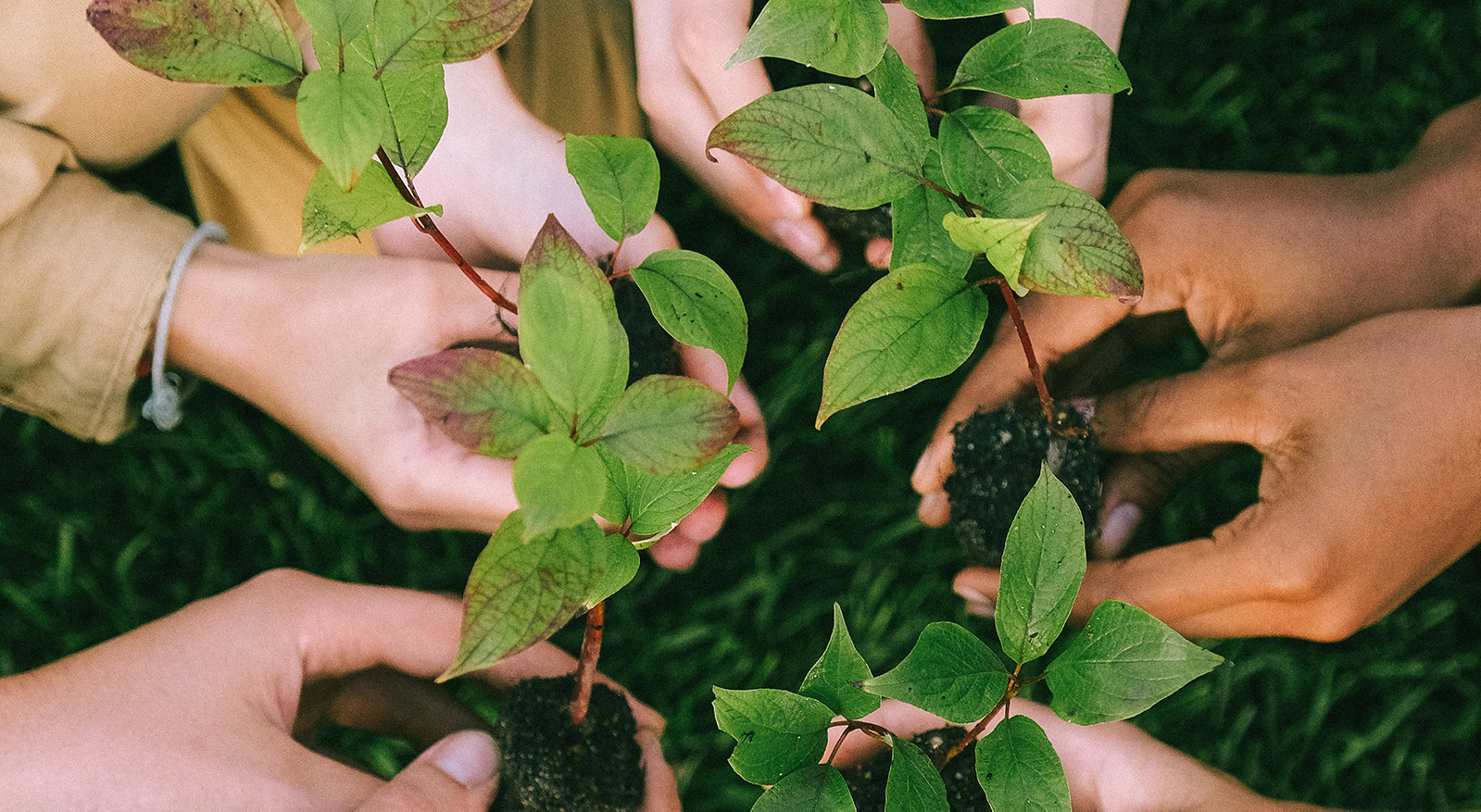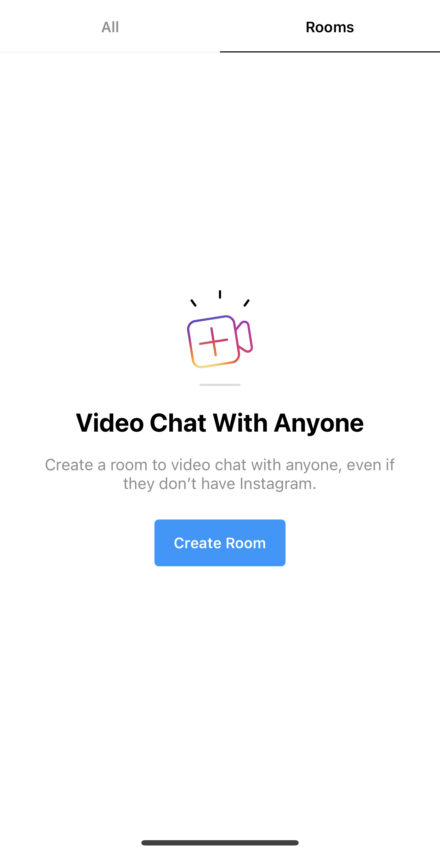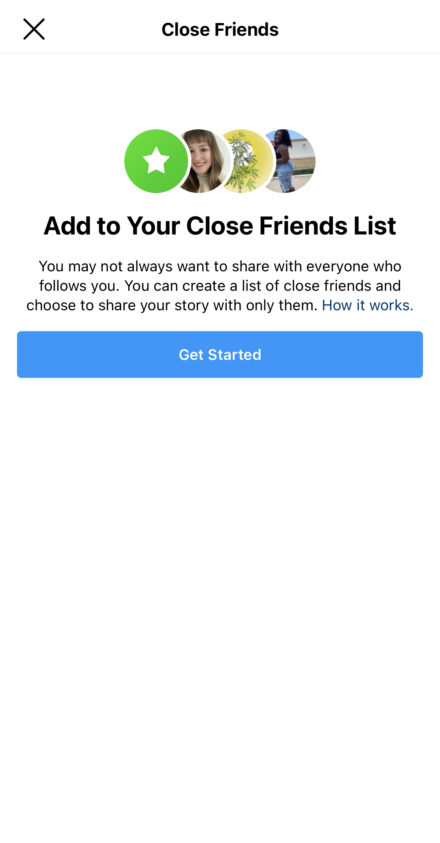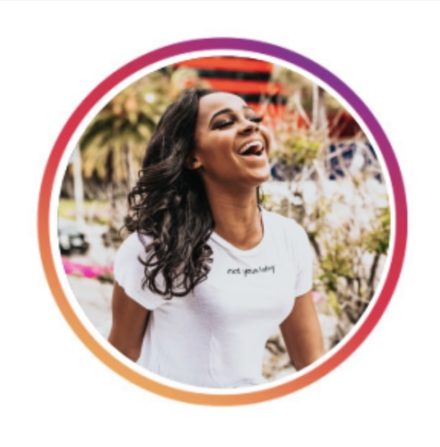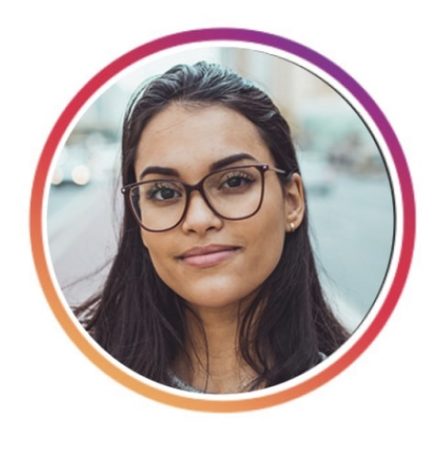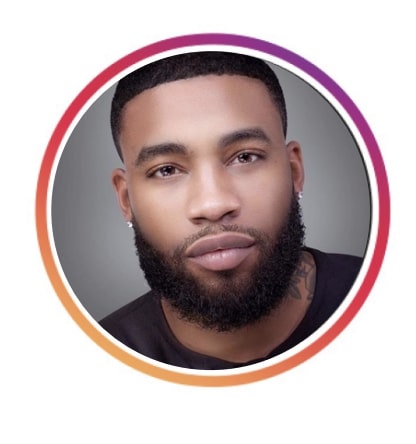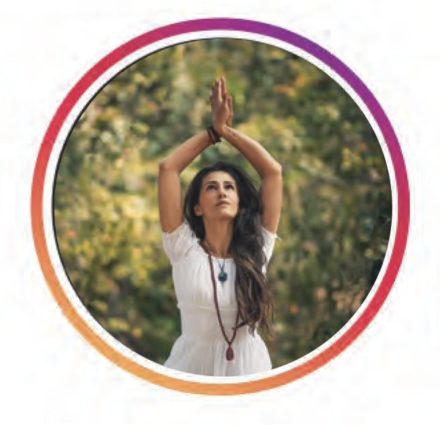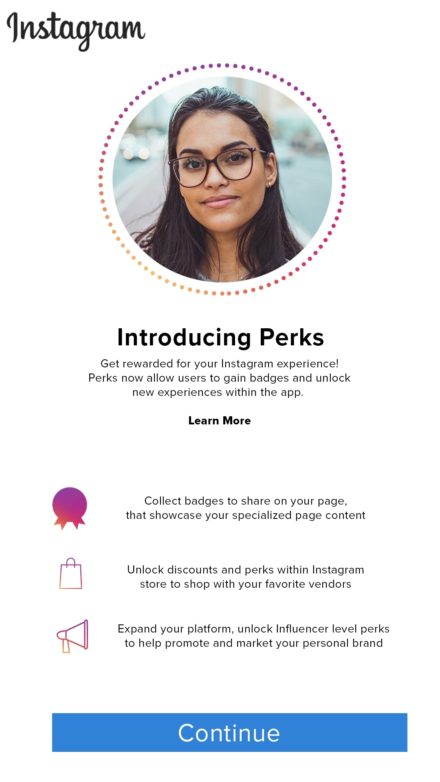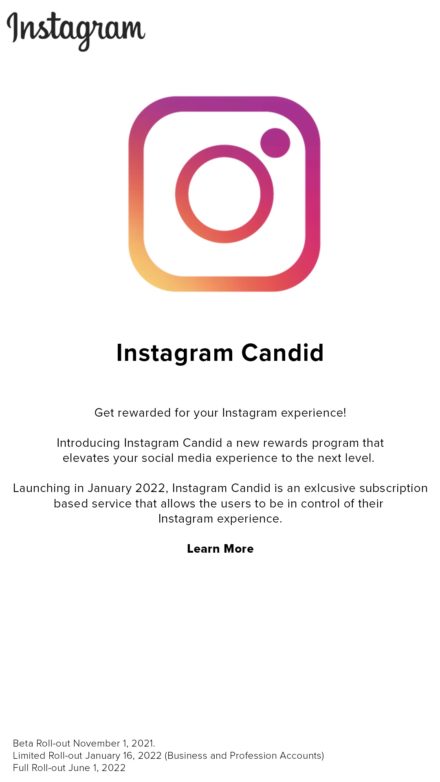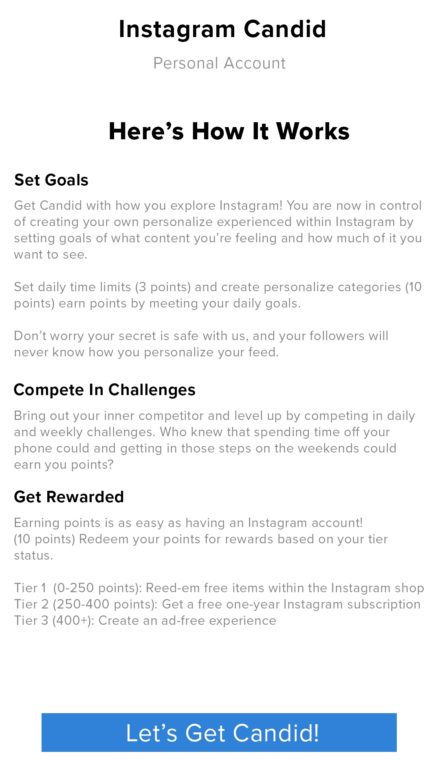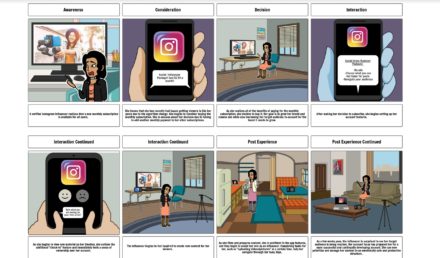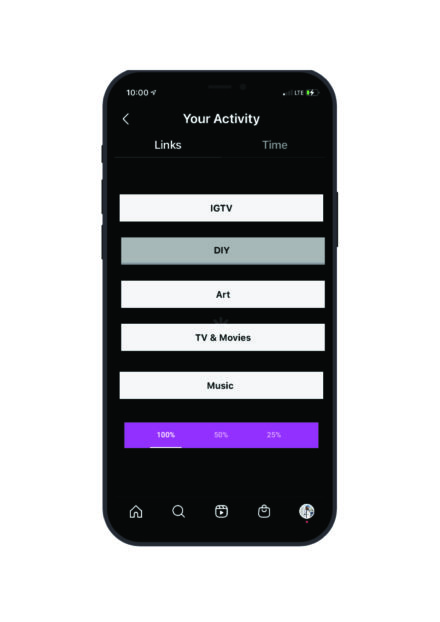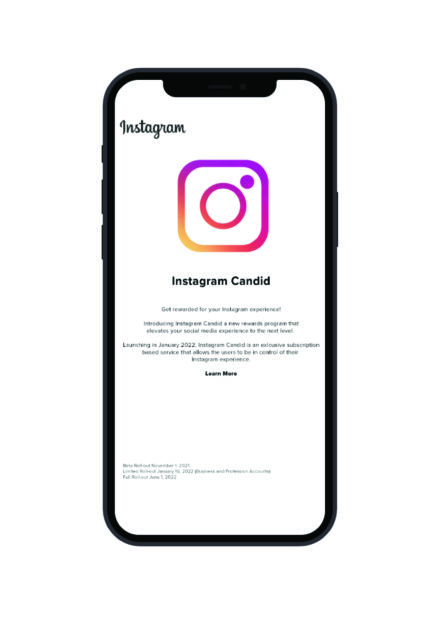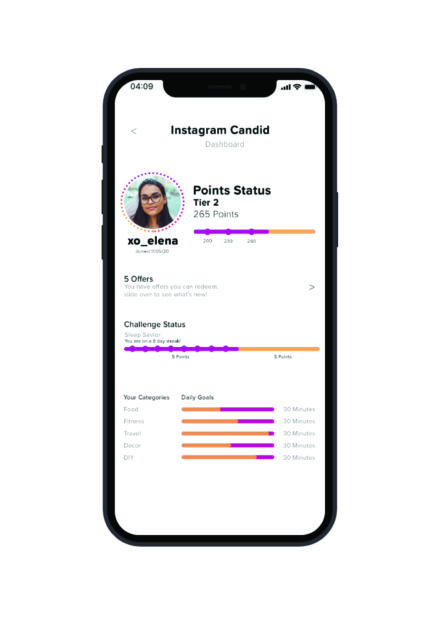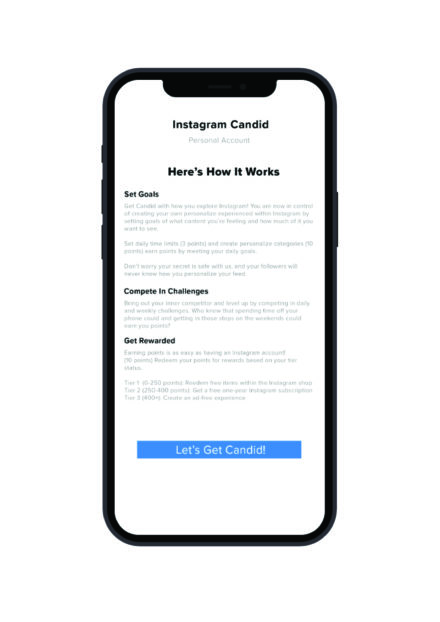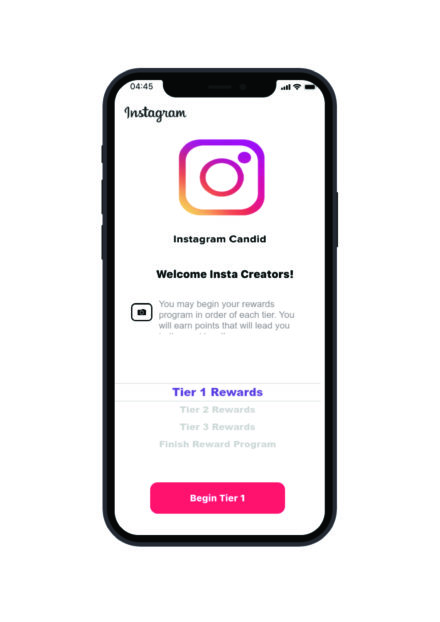Resilience for Instagram in the Age of Mental Health Awareness


How can Instagram become more resilient as society increasingly values mental health?
Instagram is a social media platform based on creating digital content (images, video, graphics) that allows users to create social communities, market, and brand themselves and their companies and share events, life details.
Increased recognition of “toxic social media culture” is causing Instagram users to take breaks from the digital content sharing platform by disabling or deleting their accounts. This project will determine a design for Instagram to emerge as a mental leader in social media and become more resilient to societal shifts.
The target audience designated for this research is all gender identities, between the ages 25 and 35 years old, that are college-educated and living in the United States that use Instagram. Observations were conducted by analyzing the functionality of the application, how the user experience was during a 1-hour session through the application, and how the analytics generated content for us to see on our regular feed, stories, and explore page.
SWOT ANALYSIS
Strengths
- Keeping connections with close friends, family, acquaintances, work associates, etc.
- Easily monetizable for content creators, brands and influencers
- Massive reach: 1 billion monthly active users; 100 million+ photos uploaded every day; 4.2 billion daily likes
- Hashtag community that quickly spreads content and information to the masses through feeds
Weaknesses
Limiting the user experience to social media trends. Users are unable to benefit from social media platforms in a positive and uplifting culture tailored to them.
Instagram users have issues with the following:
- Comparing lifestyles; influencer marketing seamlessly ties in with “authentic” content, no way to separate
- Content creators feel that they aren’t adequately able to control their brand/marketing effectively
- Social Media “toxic culture” and online free speech leaves room for uncontrolled harassment, bullying, and threats
- Lack of customization or personalization for their feeds or profile
Opportunities
- The ability to customize your social media feed and filter out what you don’t want to see
- Connect feed with daily emotional health
- Create a more personalized experience based on a person’s profile or demographics
- Implement specific touchpoints for users to control aspects of how Instagram content affects their daily life
- Incorporate platform designs that develop healthier social media usage and habits
Threats
The increasing need for mental health and social media being public; with more people taking “breaks” from social media due to toxic environment, Instagram has yet to develop a true solution to address this.
Instagram faces social pressure to modify its platform, filled with influencer marketing, image and video filters, and other inauthentic features that contribute to mental health issues, leading to emotional distress, anxiety, and depression about family, life, relationships, work, etc.
Instagram also faces continued backlash from health professionals for “selfie culture,” with users getting physical body modifications based on social media filters.
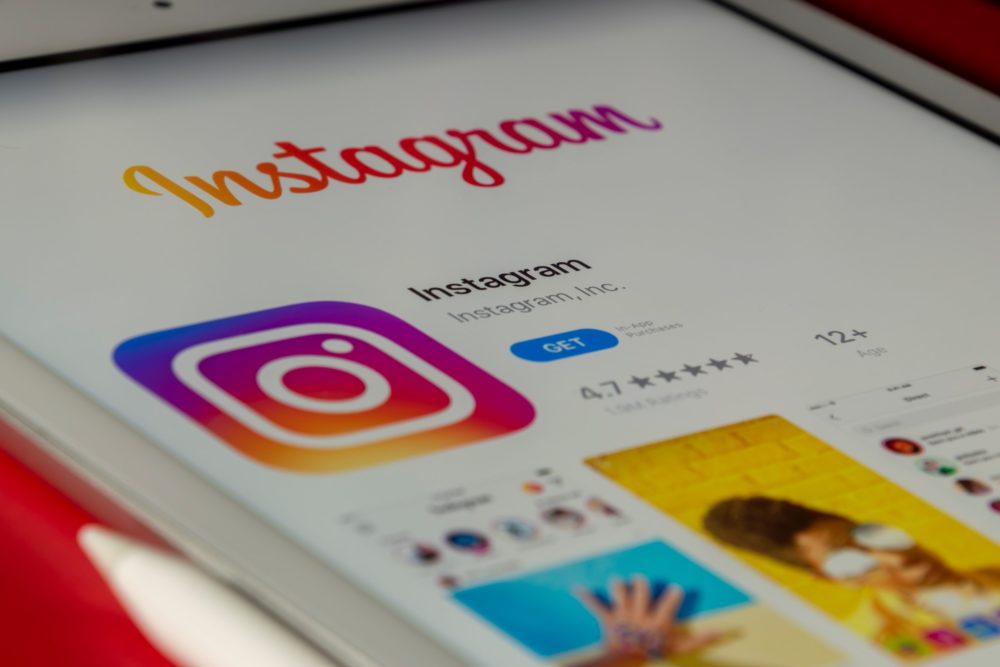
Methodology & Field Notes
Bounded Population
Our population is Instagram users of all gender identities, between 20 and 35 years old, college-educated, and living in the United States.
Observation
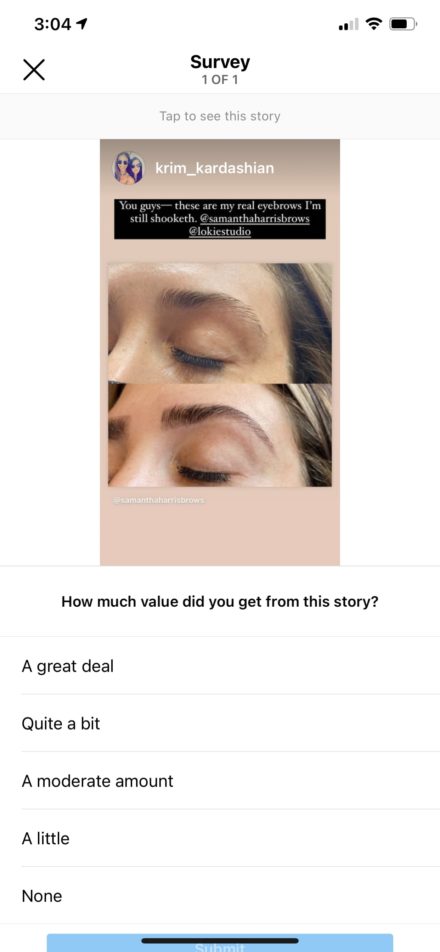
General online observations for this research provided a baseline for Instagram’s content system and current design solutions for dealing with mental health and emotional health management. We initially monitored Instagram for one 1-hour session, solely for the purpose of gathering information related to function and design.
We found a randomly generated, one-question survey that Instagram embedded in its “stories” section. This survey essentially asked how people felt about the value of certain content (seemed random and not linked to how much you interact with the account chosen).
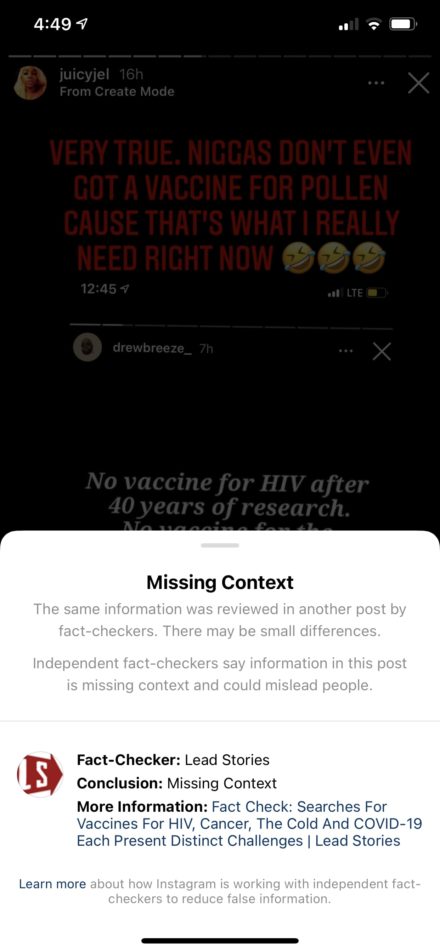
Also, we found an amount of effort on Instagram’s part to combat false information, specifically related to COVID-19 and science.
We also noted that the only way, we found, that users can take a break from their normal feeds was through the Rooms or Close Friends features.
Online Survey
We created a 12-question online survey to obtain quantitative data on Instagram users’ mental and emotional health experiences within the platform. Researchers avoided asking friends to participate in the study so that the sample of participants was random and not created with bias. Researchers posted a link to the Instagram Resilience for Mental Health survey on Twitter, Instagram, and Snapchat, and for anyone to see and asked those the researchers knew to post a link to the study on their feeds, as well. By doing so, researchers had access to people with different preferences and backgrounds.
Structured Interviews
Three structured interviews were conducted to understand Instagram users’ mental and emotional health experiences within the platform. Participants were chosen because of their level of Instagram use. Participants who were interviewed have an Instagram account and are generally active on social media. The interviewees live in Cincinnati, OH, Houston, TX, and Denver, CO, and are between the ages of 20 and 35. The interviews were conducted via phone and video in the participants place of their choosing and lasted no more than 30 minutes.
Find below the complete list of the interview questions.
Interview Schedule
- What do you primarily use Instagram for?
- Do you intentionally follow specific accounts or topics, like lifestyle influencers, meme or quote accounts, professional accounts, etc.?
- Can you give examples of the types of topics you follow?
- When you think about Instagram as a platform and the content that you see on it, how would you say it impacts your mental and emotional well-being?
- When did you start to realize, if at all, the mental or emotional toll that Instagram has taken on you?
- Have you ever taken a “break” from Instagram for an unspecified amount of time? If yes, what was the breaking point in making the decision?
- When you’re on the Instagram platform, how aware are you of your own emotions –– in real-time–– while viewing the content and interacting with other accounts?
- Do you think that is it Instagram’s responsibility or users’ responsibility to value users’ mental and emotional health, why or why not?
- Have you ever blocked, muted, or unfollowed someone due to an emotional response from something they posted? Do you remember who it was and why you had that emotional response?
- If you could name one emotion that describes how you feel the most when looking at Instagram, what would it be?
Data Collection (Secondary)
We used secondary research and found scholarly journal articles pertaining to our project topic to validate the need that we addressed throughout our project. Here are the following three articles that were used to support our thesis:
Lin C-Y, Namdar P, Griffiths MD, Pakpour AH. Mediated roles of generalized trust and perceived social support in the effects of problematic social media use on mental health: A cross-sectional study. Health Expect. 2021;24:165–173.
This study explores how problematic social media use associates with mental health, the results were negative effects on happiness and mental quality of life.
https://doi.org/10.1111/hex.13169
Gao J, Zheng P, Jia Y, Chen H, Mao Y, Chen S, et al. (2020) Mental health problems and social media exposure during COVID-19 outbreak.
This study showed the connection between social media use and mental health challenges such as depression and anxiety during COVID-19. This study was conducted in China.
https:///C:/Users/Owner/Downloads/Social%20Media%20Exposure%20(COVID%20OUTBREAK)%20Article%20(1).pdf
Kuselias S, Lauck J, Williams S. Social Media Content and Social Comparisons: An Experimental Examination of their Effect on Audit Quality: Auditing: A journal of practice and theory Vol. 40, No. 1: February 2021, pp. 55-72
This study showed the correlation between the use of social media and a person’s ability to perform their job compared to those not using social media.
https:///C:/Users/Owner/Downloads/Social%20Media_%20Social%20Comparison%20(Experiment)%20.pdf
Data Analysis
Overall, we learned the most from the personal interviews. What we had not accounted for previously was how much race played a factor in the mental and emotional health of Instagram users. During the past few weeks, during our research phase, several Black men were killed by police nationwide, and the trial of the police officer accused of killing George Floyd is being televised daily. Because of that, it was hard to establish a content baseline. Those incidents have taken over social media and have skewed the baseline for what people would usually post and see. More self-serving marketing and advertisements have lessened in favor of allyship and messaging (whether genuine or performative). The current events were brought up in all of our personal interviews. A quote from one interviewee encompassed the emotional toll that Instagram plays in their mental health:
“Having access to bad news… I’m tired of seeing Black people getting killed. There’s no filter, and there’s uncensored content. Whatever the app thinks you want to see is not right. I guess it’s the algorithm. You think I want to see a Black man being killed? You should never have to see someone’s last breaths. To me, it’s unnecessary and ridiculous.”
Additionally, something that crossed over from the literary research and the personal interviews was the fact that COVID played a large role in Instagram users understanding of how the platform was affecting their mental health. However, none of our interviews expressed real-time awareness of their ability to regulate negative emotions while using the app, unless something specific triggered them (a photo, story, graphic content, etc.).
The Turning Point: Shifting from an initial behavioral approach to a psychological one, using a metacognitive solution, how can we present users the tools to self-regulate their emotions during content consumption?
The new goal is positioning Instagram as a leader in social health and designing a social media experience that centers on mental health through digital touch points that enhance the user’s emotional interaction. Increasing emotional personalization will work simultaneously with Instagram’s current algorithm to keep users on the app.
Process Work
Critique 1: Initial Persona and Experience Map

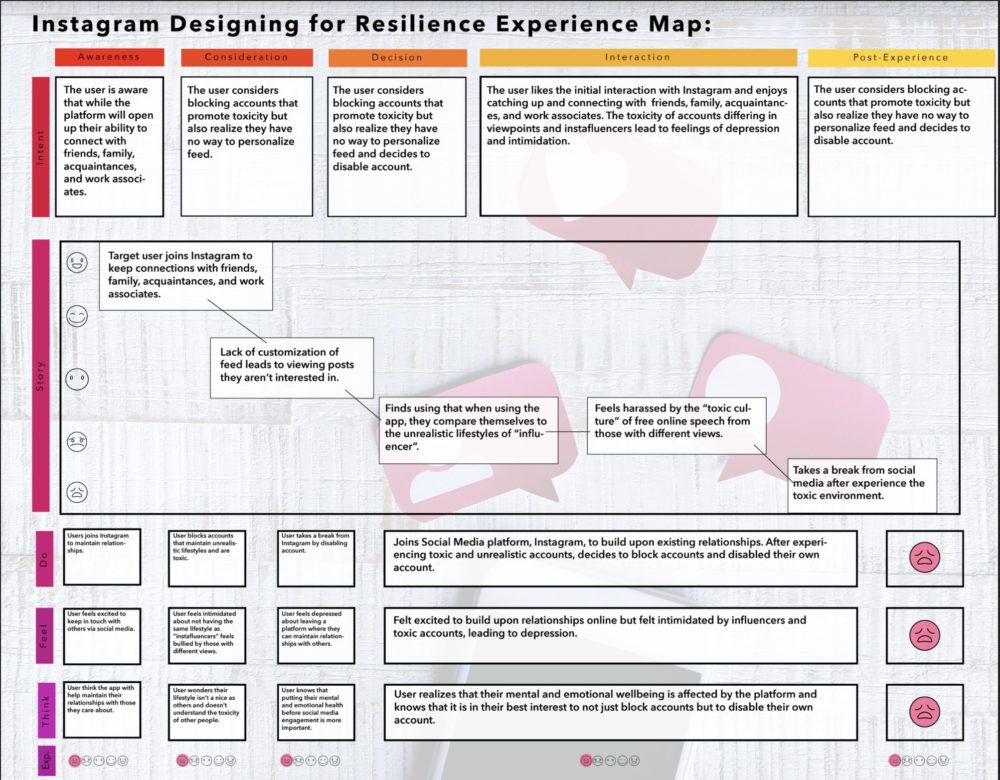
After the first critique, we updated our personas by breaking them out into four distinct people and updated the experience map.
Critique 2: Initial Design Proposals and Updated Personas
For the initial design brainstorm, we thought of multiple ideas to get Instagram user to “take a break” on the app, including visual stops signs like pop-up timers, color-coded messaged on viewed content and visual cues on the main and discovery feeds.
Meet the (new) Personas
Persona 1: Someone who wants to find a healthy social media/mental health balance, female, Black, middle class
Persona 2: Someone who is fed up with IG, female, current undergrad graduate, and Latinx
Persona 3: Someone who is unbothered with IG, male, Black, and upper class
Persona 4: Someone who is toxic in social media, white, female, upper class, and travels frequently)
Critique 3: Initial Mock-up
We decided to go with a digital reward system for Instagram. People would set mental health goals in their profile (time limits, how much of each content they want to view, the content they don’t want to see) and when they meet those goals based on streaks (how many days in a row they accomplished their goals), they earn profile badges that unlock specific perks.
The Wrench: Instagram is moving to a paid model!
starting january 2022
Instagram Candid: The Updated Prototype
Instagram Candid is a mental health community where users set goals, unlock tiers for prizes and perks, and can earn free/unpaid account status. Essentially, we made the mental health goals extremely incentivized so that users will be forced to incorporate them into their daily lives if they don’t want to pay for the service. For influencers and content creators, the tiers unlock exclusive access to things like photo editing software, filters, layouts and more.
Storyboards: one for the initial experience and one for the updated experience with Instagram Candid
The Final Prototype
Tiered rollout starting in January 2022
- Beta testing starting November 2021
- Jan. 2022: Corporations, small businesses, influencers/content creators
- Paying full price, start building rewards for the following year
- June 2022: general user rollout
- Credited for the first year, as long as they meet their goals for 2022
- If they do not meet goals, they will be charged for 2022 and 2023

